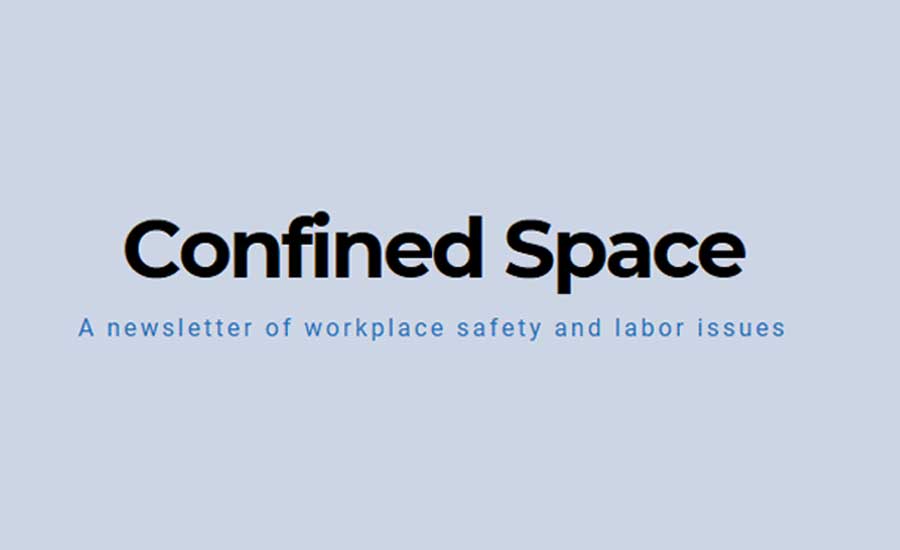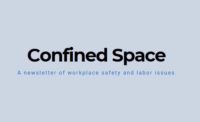Posted with permission from Confined Space, a newsletter of workplace safety and labor issues.
OSHA issued a new policy document last week for its Voluntary Protection Programs (VPP), weakening measures taken in the last administration that were intended to restore the program’s integrity which had been threatened by uncontrolled growth during the Bush administration.
VPP is a program, created under the Reagan administration, that recognizes sites that have “implemented effective safety and health management systems and maintain injury and illness rates below…averages for their respective industries. ” VPP participants are also exempted from programmed inspections, but OSHA does still inspect in response to a worker complaint, a fatality, catastrophe or other serious event.
The new OSHA policy document, revising VPP’s “Memorandum 7” makes it easier for VPP participants to remain in the program, even if one of their employees has been killed on the job, they received a “willful” OSHA violation, or they have been put into OSHA’s Severe Violator Enforcement Program.
Background
As I wrote previously, President Obama’s OSHA inherited a VPP program that was in crisis and fighting for its life. Uncontrolled growth under the Bush administration had threatened OSHA’s ability to maintain the integrity of the program. At the end of 1995, VPP membership was at around 200 worksites. But after George W. Bush’s first OSHA head, John Henshaw, decided the VPP was OSHA’s future, the program grew to 800 participants in 2002 and to 2,174 sites in 2008. Henshaw announced in 2002 that he wanted to grow the program ten-fold, to 8,000 sites.
The growth was already causing problems in 2004 (and again in 2009) when the Government Accountability Office warned that the uncontrolled growth of the program threatened its integrity and that OSHA was allowing participants that had experienced fatalities and serious injuries to remain in the program without reviewing the adequacy of their programs. VPP sites have to be reapproved every 3-5 years, and there was an enormous backlog of VPP reapproval applications, which meant that there was no assurance for hundreds of sites that they were still qualified to be part of VPP.
The GAO noted that OSHA was failing to review the records of VPP participants who had experienced fatalities and willful citations, and terminate those who no longer qualified to be in the program.
Chris Hambry of the Center for Public Integrity wrote a series of articles about problems in the VPP in 2010 and 2011. Hambry focused on a VPP participant, a Tropicana plant in Florida where a fire broke out in 2005, severely burning two employees, noting that “In the official report, inspectors didn’t mince words. They found instances in which ’employees were told to “throw safety out the window” and get the work done.” Company managers had shown “deliberate, voluntary and intentional disregard to employee safety.” Yet, despite receiving a dozen violations, including two willfuls, Tropicana remained a VPP participant.
According to Hambry, “Since 2000, at least 80 workers have died at these sites, and investigators found serious safety violations in at least 47 of these cases.”
In order to address these problems, OSHA issued Memorandum 7 in 2013 to address OSHA’s response to employee deaths and willful violations at VPP sites. The new policy required the status of the VPP site to be changed to “Inactive Pending Fatality/Catastrophe Inspection” immediately following a fatality (either of the employer’s employee or an employee of a contractor at the site.)
Following a citation, if it was determined that the fatality was work-related, or when a site is placed in the Severe Violator Enforcement Program, or when a willful violation(s) was issued, an Intent to Terminate (ITT) Letter was automatically sent to the facility. The facility could then appeal the ITT to the Assistant Secretary with the reasons why it should not be removed from VPP. The Assistant Secretary — in consultation with the Regional Administrator — would then make a determination about whether the facility should be terminated. Facilities were also given the opportunity to voluntarily withdraw from VPP instead of being terminated. The advantage of voluntary withdrawal was that the facility could reapply in one year, whereas terminated facilities had to wait three years to re-apply.
I was involved in almost every decision made under Memo 7. We carefully considered the circumstances of the fatality, how it related to the employer’s health and safety program, the recommendation of the Region, the opinion of the union (if any) and other factors. Most were terminated, but in some cases, for example when the employer had no control over a contractor’s action, or when the fatality seemed unrelated to the employer’s health and safety program, the appeal was accepted and the site was allowed to remain in VPP.
The New VPP Memo 7
Last week, OSHA issued a revised Memorandum 7 which significantly weakens the 2013 version. There are three major changes, two of which will weaken the program.
-
The new policy focuses only on fatalities and removes any automatic sanctions against VPP sites that had willful violations or that had been put into OSHA’s Severe Violator Enforcement Program (SVEP). SVEP is a program that “concentrates resources on inspecting employers who have demonstrated indifference to their OSH Act obligations by committing willful, repeated, or failure-to-abate violations.”
-
The new policy gives Regional Administrators the option to unilaterally determine “that termination is not recommended,” as long as the national office is notified, rather than automatic termination with the option of appeal to the Assistant Secretary. If the Regional Administrator recommends termination, the participant still has the opportunity to appeal to the Assistant Secretary.
-
In response to OSHA’s Severe Injury Reporting Program, issued in 2015, the status of VPP participants who fail to report fatalities, hospitalizations or the loss of an eye to OSHA within the required time will also be changed to “Inactive Pending Inspection.”
Failing to Learn From the Past?
As I said above, due to its uncontrolled growth the inability (or unwillingness) of the Bush administration to maintain the quality and integrity of the program, VPP was in serious trouble at the beginning of the Obama administration — to the point that there was considerable pressure from high level administration officials to eliminate the entire program — along with other failing programs in the federal government that had not proved their effectiveness in an era where agency budgets were tight.
VPP was saved by Memorandum 7 and other measures taken by OSHA to restore the program’s integrity.
But now OSHA seems to be at risk of unlearning the important lessons of the early 2000’s. Secretary of Labor Acosta is a big fan of VPP, explaining in his FY 2018 budget hearing that Trump’s proposed budget
Well, that conclusion is debatable, but what is not debatable is what happens when OSHA’s regions are pressured from Washington to increase their VPP numbers — especially if they don’t have the additional budget to dedicate to the program. Pressure to grow the program can’t help but influence the Regional Administrators’ decisions about whether to terminate participants that no long meet the criteria of the program — or that have experienced fatalities or willful violations of the law. It’s that much harder to grow your numbers when you have to subtract at the same time.
Conclusion
A program like VPP makes sense for OSHA — if it’s properly overseen and appropriately sized. It’s important for everyone to understand and see that companies can excel in workplace safety and health — far beyond what OSHA requires — and still make a profit. After many visits to VPP facilities and meeting with their safety and health staff, I’ve admired their dedication to workplace safety, the way they implemented strong health and safety programs, and the pride they showed in their health and safety achievements.
But there are two major cautions:
First, OSHA is a tiny agency with an enormous mission and very limited resources. When budget choices have to be made, what makes more sense? Putting scarce resources into helping companies that already “get it” and are already excelling, so they can get even better? Or putting enforcement resources into the bottom feeders — those companies that are deliberately cutting corners on safety, injuring and killing workers?
And second, if you’re going to have a program like VPP, what’s more important? The number of participants in the program, or the program’s integrity — ensuring that every participant in VPP deserves to be there. Because ultimately, who cares how big the VPP program is if no one believes it’s actually doing what it is supposed to do: setting an example of excellence in safety and health?
The problem with the new Memorandum 7 is that it threatens to sacrifice VPP’s integrity for size. That’s a treacherous path that OSHA has already been down. The agency learned its lesson from that experience — but memory appears to be short in this administration.
Click here to visit Confined Space.
Click here to donate to Confined Space.



